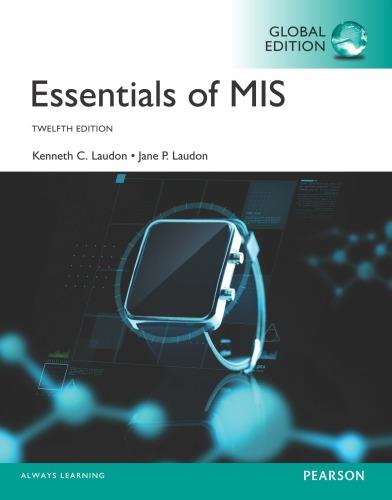Question
10 The size of claims (in units of 1,000) arising from a portfolio of house contents insurance policies can be modelled using a random variable
10 The size of claims (in units of 1,000) arising from a portfolio of house contents
insurance policies can be modelled using a random variable X with probability density
function (pdf) given by:
1 ( ) ,
a
X a
ac f x xc
x
+ =
where a > 0 and c > 0 are the parameters of the distribution.
(i) Show that the expected value of X is [ ] 1
ac E X
a = , for a >1. [2]
(ii) Verify that the cumulative distribution function of X is given by
( ) 1 ,
a
X
c Fx xc
x
= (and = 0 for x < c). [2] CT3 A20105 PLEASE TURN OVER
Suppose that for the distribution of claim sizes X it is known that c = 2.5, but a is
unknown and needs to be estimated given a random sample x1, x2, ..., xn.
(iii) Show that the maximum likelihood estimate (MLE) of a is given by:
1
log 2.5
n i
i
n
a
x
=
=
. [3]
(iv) Derive the asymptotic variance of the MLE a , and hence determine its
approximate asymptotic distribution. [4]
Consider a sample of 30 observations from this distribution, for which:
30
1
log( ) 32.9 i
i
x
=
= .
(v) Calculate the MLE a in this case, together with an approximate 95%
confidence interval for a. [5]
In the current year, claim sizes are assumed to follow the distribution of X with a = 6,
c = 2.5. Inflation for the following year is expected to be 5%.
(vi) Calculate the probability that the size of a claim arising from this portfolio in
the following year will exceed 4,000.
2 Consider the following three independent random samples from a normally
distributed population with unknown mean :
Sample 1:
19.9 20.4 20.3 22.3 16.7 18.7 20.5 19.0 20.1 16.4 21.5 21.4 17.8 22.5 15.2
For these data: n = 15, 2 292.7, 5,778.69 i i x x = =
Sample 2:
20.8 25.9 22.1 21.7 16.0 12.1 27.6 16.1 16.8 17.1 21.3 18.6 24.9 14.8 22.2
For these data: n = 15, 2 298.0, 6,192.32 i i x x = =
sample mean = 19.867, sample variance = 19.432
Sample 3:
20.6 18.5 21.5 16.9 21.5 21.2 20.9 22.4 14.5 22.0 20.2 17.0 20.3 23.0 19.3
18.9 20.6 20.9 15.3 21.5 16.8 18.5 21.6 16.8 20.4
For these data: n = 25, 2 491.1, 9,773.77 i i x x = =
sample mean = 19.644, sample variance = 5.275
Consider t-tests of the hypotheses H0: = 18 v H1: > 18.
(i) (a) Calculate the sample mean and variance for Sample 1.
(b) Carry out a t-test of the stated hypotheses using the Sample 1 data
(stating the approximate P-value) and show that H0 can be rejected at
the 1% level of testing.
[6]
(ii) (a) Carry out a t-test of the stated hypotheses using the Sample 2 data
(stating the approximate P-value and the conclusion clearly).
(b) Discuss the comparison of the results with those based on Sample 1
(include reasons for any difference or similarity in the test
conclusions).
[6]
(iii) (a) Carry out a t-test of the stated hypotheses using the Sample 3 data
(stating the approximate P-value and your conclusion clearly).
(b) Discuss the comparison of the results with those based on Sample 1
(include reasons for any difference or similarity in the test
conclusions)
Step by Step Solution
There are 3 Steps involved in it
Step: 1

Get Instant Access to Expert-Tailored Solutions
See step-by-step solutions with expert insights and AI powered tools for academic success
Step: 2

Step: 3

Ace Your Homework with AI
Get the answers you need in no time with our AI-driven, step-by-step assistance
Get Started


